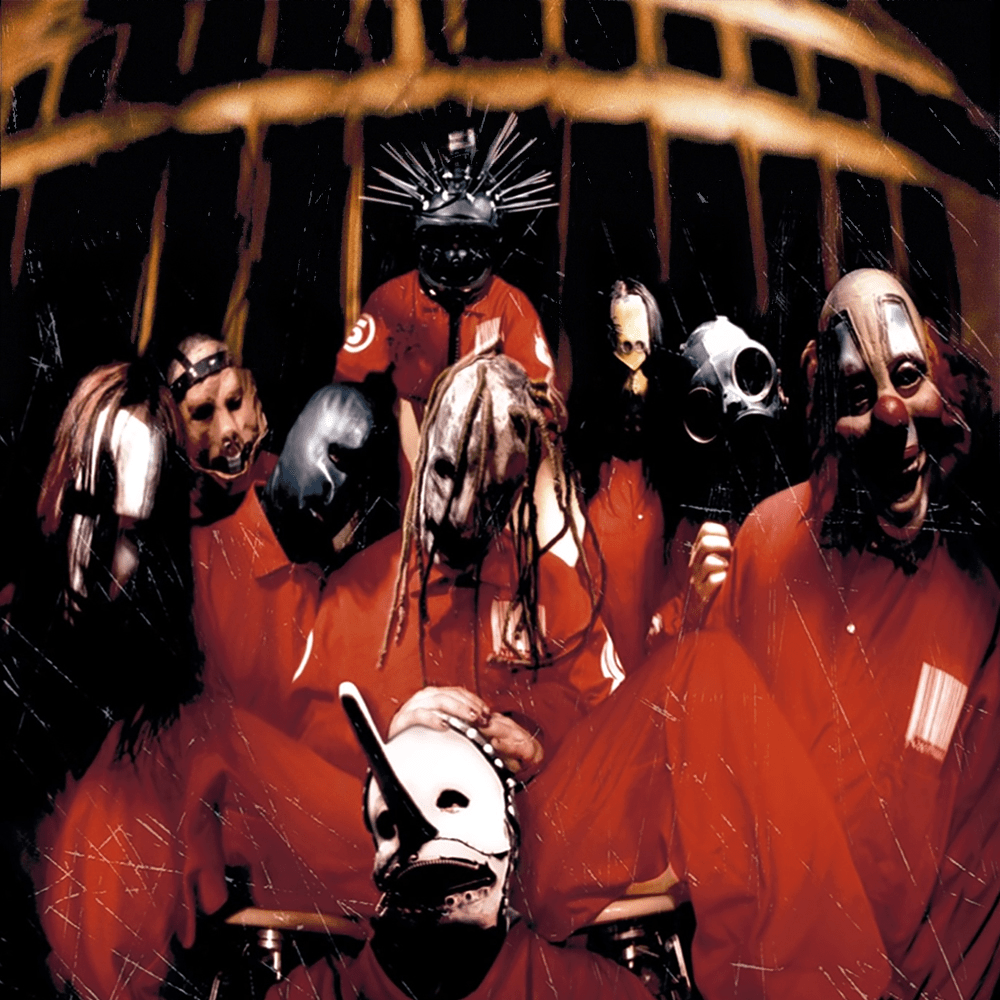HEAVY MUSIC HISTORY: Slipknot – Slipknot
“You thought LIMP BIZKIT was hard? They’re THE OSMONDS. These guys are something else entirely, and it’s pretty impressive.” Rick Anderson’s above quote from AllMusic remains as true today as it did then. June 22nd 1999 saw LIMP BIZKIT release Significant Other, an album that, whatever way you look at it, remains an important landmark in nu-metal’s tapestry. However, just seven days later came a record that was so visceral, so terrifying and so innovative that BIZKIT’s name vanished from the lips of everyone that delighted in heavy music. Yes, dear reader, June 2024 marks twenty-five years since SLIPKNOT welcomed Planet Earth to their neighbourhood with their pummelling, incendiary self-titled debut.
Formed in the autumn of 1995 in Des Moines, Iowa, SLIPKNOT were an amalgamation of members from the local scene. Initially called MELD, the band’s core was drummer Nathan ‘Joey’ Jordison, bassist Paul Gray and percussionist Shawn Crahan; they were complimented by guitarists Josh Brainard and Donnie Steele and vocalist Anders Colsefni, who also took up percussion. Within a year, the sextet had increased to seven; Steele’s departure on spiritual grounds brought Craig Jones in on guitar, before he moved to samples and Mick Thomson came on board.
This lineup released the much sought after Mate. Feed. Kill. Repeat. on Halloween in 1996 before more personnel changes occurred: in on lead vocals came Corey Taylor with Colsefni moved to backing duties, before the latter departed in September1997 and Greg ‘Cuddles’ Welts came on board. A second demo brought a lot of interest from record labels, culminating in Roadrunner Records signing the band to a $500,000, seven-album deal on July 8th, 1998; prior to this, DJ Sid Wilson had become the band’s ninth member and Welts was fired and replaced by Brandon Darner. He in turn left shortly after with Chris Fehn joining.
The band travelled to Indigo Ranch Studios in California in September 1998 with Ross Robinson, who had offered to produce the album prior to their label signing. Robinson, who would become known as ‘The Godfather of Nu Metal’, sought to refine certain elements of SLIPKNOT’s sound, but retain the intensity of their live shows. As such, the recording process was said to be “very aggressive and chaotic” – the drums were all recorded within three days to capture the raw, live sound SLIPKNOT strove for, while Robinson aided them in stripping away the more experimental sections and guitar solos in favour of more straightforward metal.
By November, recording seemed complete, and the band returned to Des Moines for the festive period. However, over that time, Josh Brainard left as, in his words, “some decisions were made that I wasn’t particularly happy with”. His replacement was Jim Root, who returned with SLIPKNOT to the studio in February of 1999. Following the recordings came a challenging mixing period as Robinson and Joey Jordison used exclusively analogue equipment instead of digital, before the band went off on that year’s Ozzfest tour and began to generate significant hype for their upcoming album around the United States.
Even in 2024, few records come close to matching the seismic power and presence that Slipknot produces; for many, even the band themselves haven’t ever made the same impact. 99% of the metal world many know the songs inside and out, but a quarter century on, they’re still just as sensational. The first half dozen tracks are about as close to perfect as you can get: the sinister squeals and samples of 742617000027 exploding into the abrasive (sic), followed by the snarling Eyeless, the menacing Wait and Bleed, the bludgeoning Surfacing and the frenetic Spit It Out. The back half contains such delights as the crush of Liberate, the dark and evil Purity, the eight-and-a-half minute, anguished Scissors and, if people kept the CD on long enough, the final punch of Eeyore. Hell, even when Purity had to be removed due to copyright infringement, its replacement in Me Inside was just as potent in its delivery.
Upon its release, Slipknot sent the band into the next galaxy, let alone stratosphere. This wasn’t just a nu metal album; it had death, speed, thrash, industrial and alternative within it, creating a sound that hadn’t been heard in any capacity to that point. AllMusic weren’t the only outlet singing its praises: Rolling Stone called it “metal with a capital M” and Kerrang! lauded it for being “wholly uncompromising”. In May 2000, it became the first album from Roadrunner to achieve platinum status un the US; it’s since done that in Canada, Australia and the UK.
At the end of 1999, SLIPKNOT went back on tour, playing a number of US dates before making their way to Europe for the first time. The opening date on the continent was at the famed Astoria in London, a show that has gone down in British metal history as all the rumours of SLIPKNOT’s apocalyptic live show were proven true, right down to Sid Wilson diving off the venue balcony. Twice. The hype from across the pond wasn’t unfounded; this eighteen-legged juggernaut were the real deal, and metalheads who had recoiled in horror at nu-metal’s rap infusions growing popular were all of a sudden given hope that maybe, just maybe, this bunch of guys from Iowa would spearhead a new chapter in heaviness. Of course, as time passed, it became apparent that, as far as SLIPKNOT were concerned, they were just getting started…

Slipknot was originally released on June 29th, 1999 via Roadrunner Records.
Like SLIPKNOT on Facebook.

